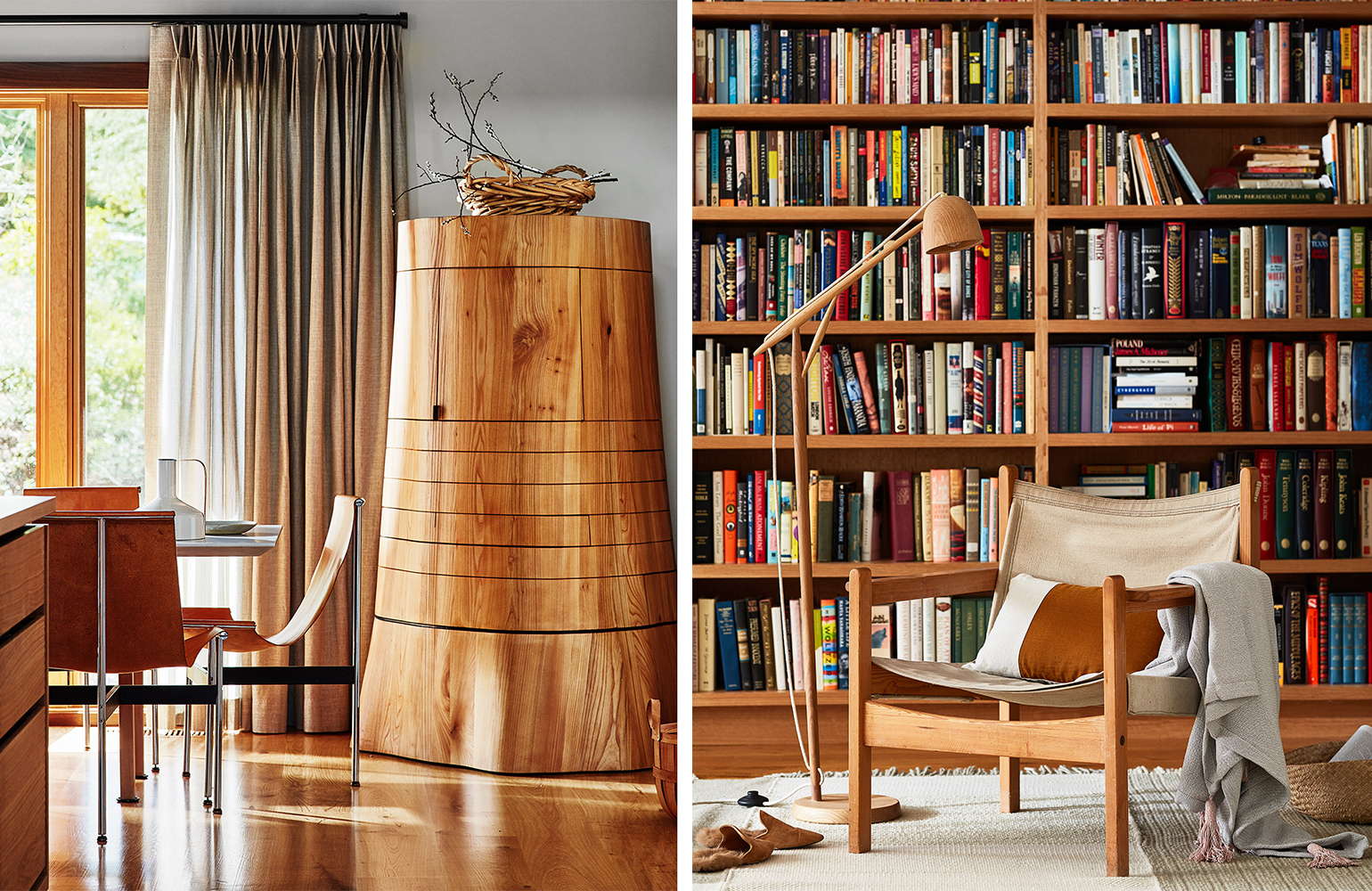In a 1970 interview with Life magazine, furniture maker George Nakashima talks about working with trees from an island near Kyushu, Japan, that are between 6,000 and 7,000 years old. “In their presence you feel humility instead of that arrogance that wants to conquer nature,” Nakashima said. Interior designer Lisa Staprans counts Nakashima as one of her influences for her spaces that respect the natural history of each object and inspire love and joy in the people who inhabit them. Principal at Staprans Design in the Bay Area, Staprans pursues a practice called “soulful design,” in which she seeks sustainably-constructed objects and materials that support local communities, and she ultimately designs spaces that support the emotional and physical health of her clients. Read on for our interview with Staprans.

Q. Could you provide an example of what you call “soulful design”?
A. I did a project that had a central island made out of a single slab of walnut wood approximately eleven feet long and six feet wide. This wood came from an old tree. It became the main island in the center of the kitchen, and it would be where the family would share meals, stories, and life with their young children for many, many years. We all felt that that island would be the center of the home, and that felt very soulful to me and to my clients. When we selected this amazing piece of solid walnut wood, the whole family came to select it at the woodyard. There were many, many buildings filled with pieces of amazing wood, and this one piece of wood stood out and spoke to them. Yes, it felt like it had a soul. The famous furniture maker George Nakashima talks about the connection between humankind and nature. Here everyone was involved — the grandparents, the clients’ children, the dogs. It was a beautiful circle of life.

Q. How has meeting them and understanding how they create products affected your design process?
A. It has a large influence on my design and work. When you meet a passionate artist who loves to create and loves the process, and they explain to you what inspires them, it has an amazing ripple effect on your work. That joy of creating and the explanation of the materials, process, and story on how they create brings so much depth and more joy to my interiors.

Q. What’s an example of a simple home element that can alter how our brains interpret our surroundings?
A. A color that brings you joy. A chair that fits you well and makes you feel relaxed. A light that sets a mood. A bath that helps you relax. A bedroom in colors that soothe you.

Q. What are some of the biggest challenges when working with a philosophy of “soulful design”? What are the biggest rewards?
A. Being patient is the biggest challenge. The biggest rewards are that the space feels right and gives such a sense of peace, inspiration, and happiness.

Q. In a perfect world, what would be the future of design? In an imperfect world?
A. In a perfect future world, I hope we’re creating spaces that make us more thoughtful and happy people. I hope we prioritize healthy and healing spaces that are sustainable and use renewable energies.
In an imperfect world, we will get sick more often and have more anxiety in life. We will contribute to the destruction of our precious planet even more if we do not practice sustainable design and living. I worry that if we do not pay attention to sustainability we will not be healthy, and we will get sick more often. We need to create spaces that make us happier and healthier, and help our planet be healthier too. Without a planet, we won’t be very happy. Our living and working environments greatly affect our health and wellbeing.

Q. While the majority of your projects are residential, you’ve also designed businesses, university spaces, and offices. Do you approach these projects differently than you would a home?
A. I actually approach them very much the same. I always find out from the clients (the CEO, facilities team, and users) about the ethos they want, how they want it to feel, what the brand is, the story they want the space to tell, the programming needs, and end goals. These are some of my favorite parts of the process — finding out how will use the space and how they will use it, and figuring out how my design will tell the story of their place and space. I love meeting their needs and giving them spaces that so many people will use, enjoy, and do inspired work in.

Q. How does ethical/sustainable consumption affect the way you design a home?
A. It drives all of my decisions. I always strive to select products that are well-made. They always come from manufacturers or representatives that share my passion and care for how things are made, and the effect they have on us as humans and on our planet. Our environment needs to be healthy, so the companies should share the values of not polluting our environment and paying living wages to artisans around the world. I work with craftspeople, architects, manufacturers, and artisans that all care about how things are made and the impact they have all around us. I also often select reclaimed wood to use in cabinets and zero-VOC (volatile organic compound) paints for a healthy home environment, and I don’t use off gassing or dyes that can make you sick. I also create interiors with good air flow and natural light that contribute to a sense of wellbeing.















